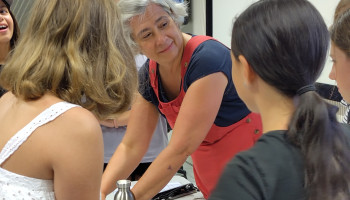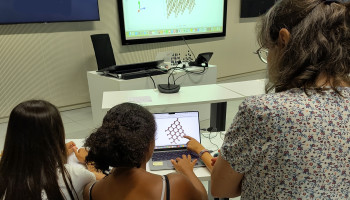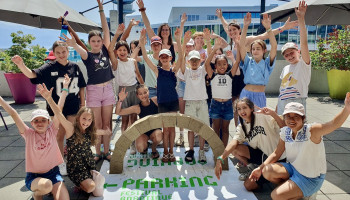EPFL summer lab visit allowed young girls to discover materials simulation
From 11 to 15 August, 20 girls aged 11 to 13 participated in the summer camp "Matériaux super géniaux" organized by the EPFL Science Outreach department and supported by the NCCR MARVEL. The program included an immersion into the fascinating world of materials with extraordinary properties. From shape-memory metals to crystallizing powders, not to mention liquids with surprising behaviors, the participants had the opportunity to handle surprising substances and discover science in a new light
On 13 August, the girls could visit NCCR MARVEL and the THEOS lab. Under the guiding of Dr Lidia Favre-Quattropani and Dr Valeria Granata, they discovered how 2D materials can be found using supercomputers — this is easier than looking at each material by hand. They could also see that atoms are vibrating in materials, that sound or heat can favor these vibrations, and that physicists call these vibrations phonons. Eventually they could visualize these phonons on the interactive phonon visualizer on the Materials Cloud platform.


After attending a workshop on "How to conduct an interview" led by Victoria Turrian from RTS - Radio Télévision Suisse, in the morning, they put their new skills into practice by interviewing Dr Lidia Favre-Quattropani, MARVEL scientific manager, about her career and her passions. This unique experience allowed them to discover the art of scientific communication.


Another visit to the EPFL Mechanical Metallurgy Laboratory (LMM) gave them the opportunity to meet researchers who talked to them about the main families of materials — metals, alloys and composites. To make it all more concrete, they carried out an experiment with chocolate to better understand the principle of a composite material.
It was a privilege to see these young minds learning about science with such enthusiasm and curiosity. Maybe this experience will inspire them to become the next generation of materials scientists.
Low-volume newsletters, targeted to the scientific and industrial communities.
Subscribe to our newsletter